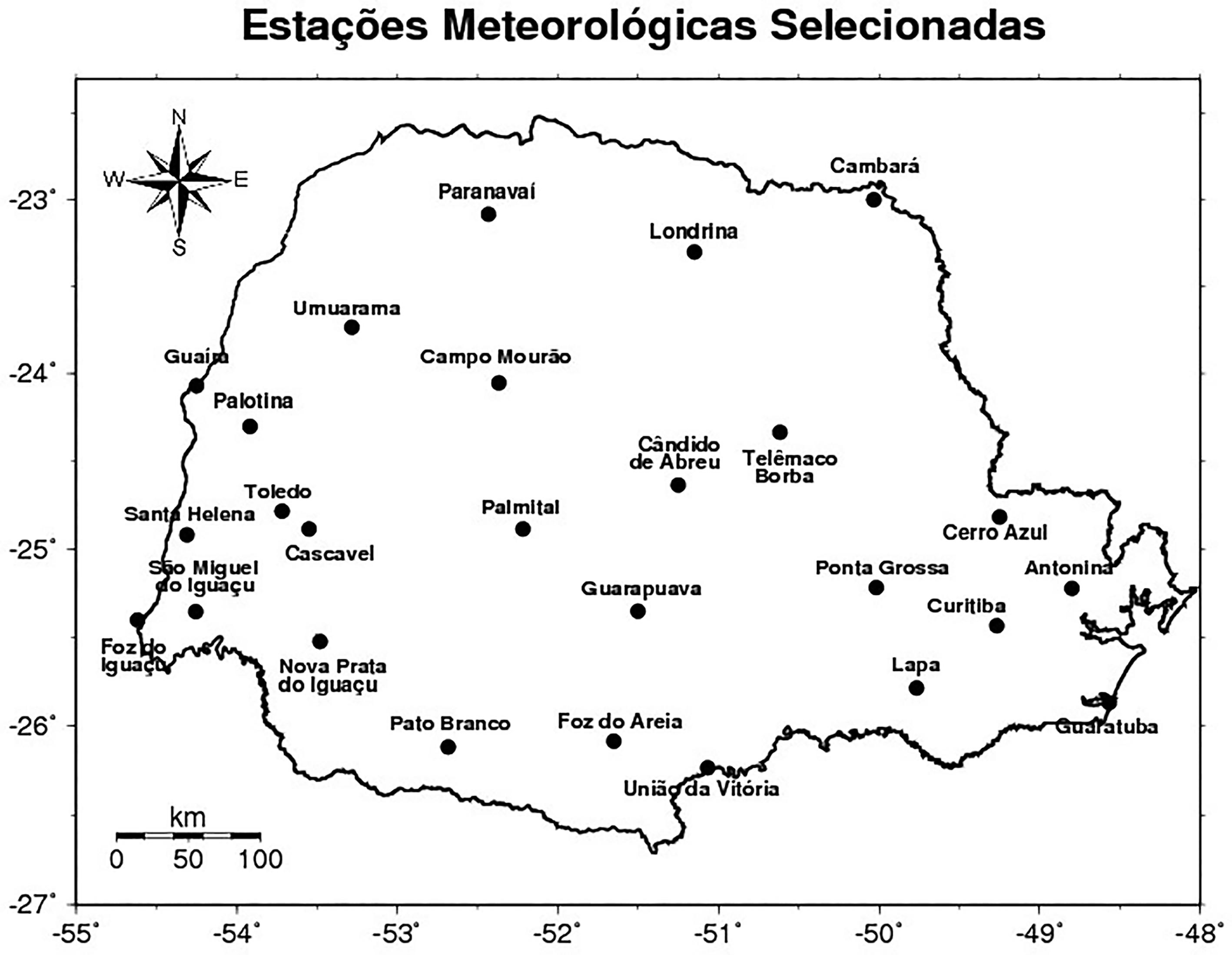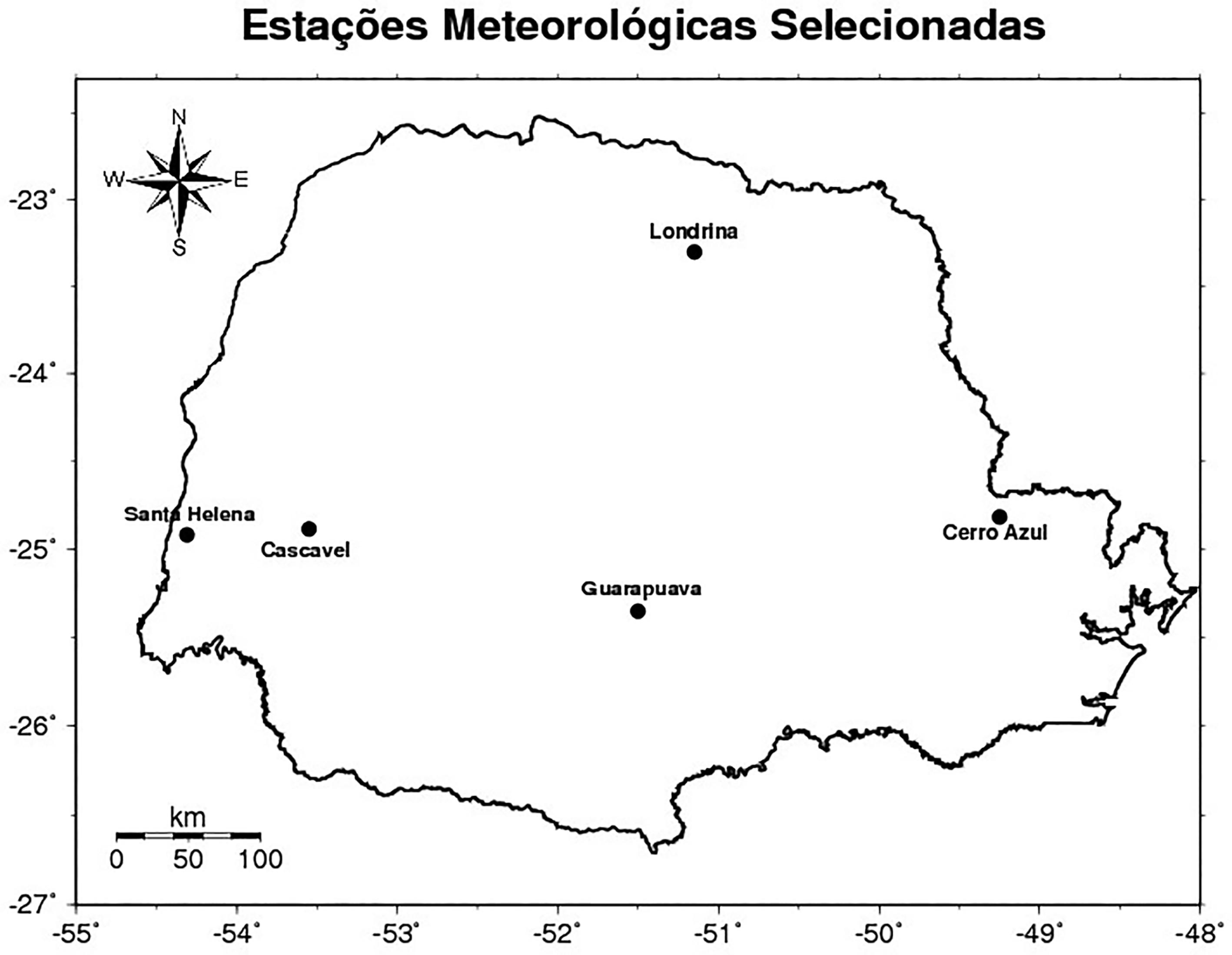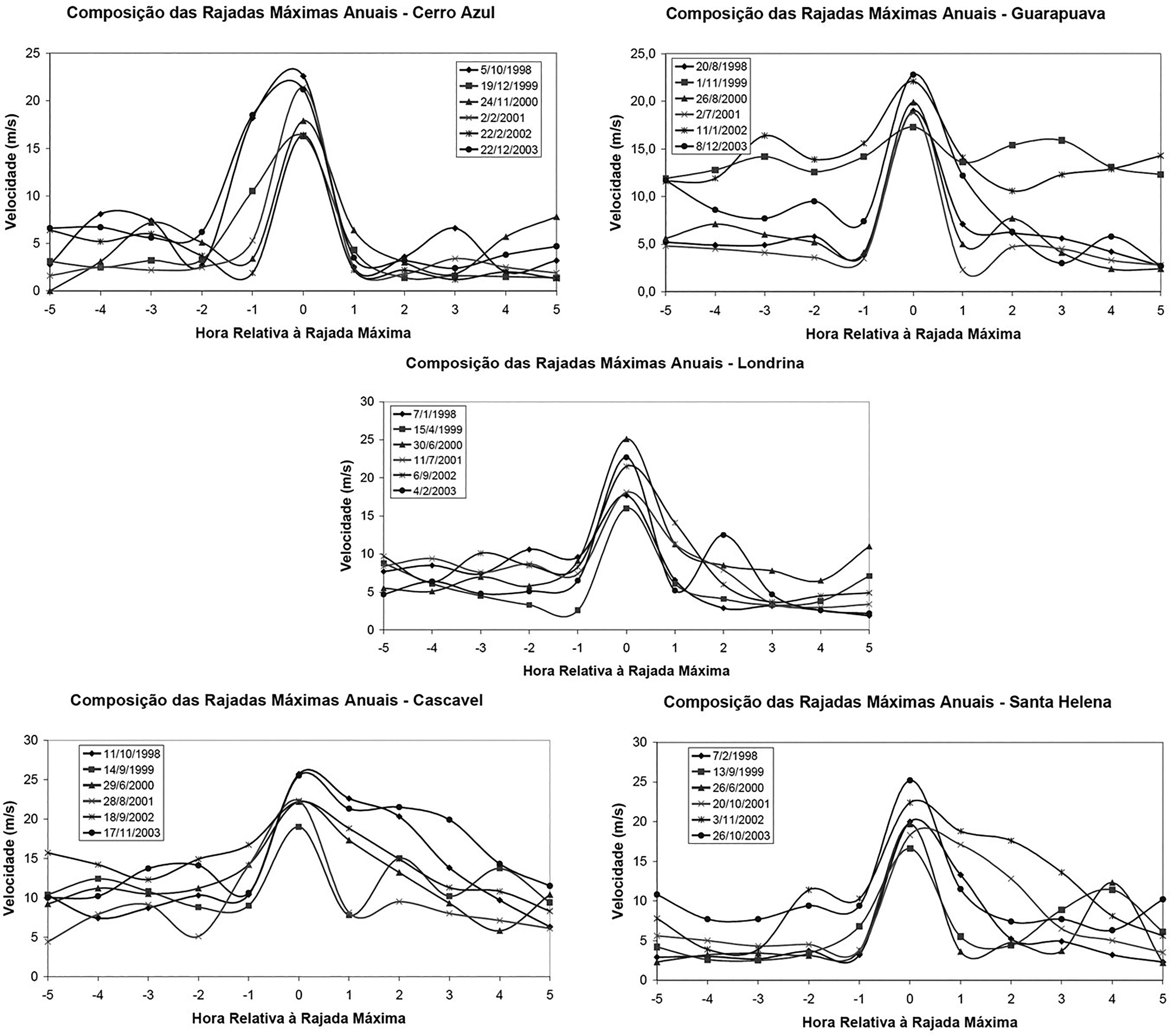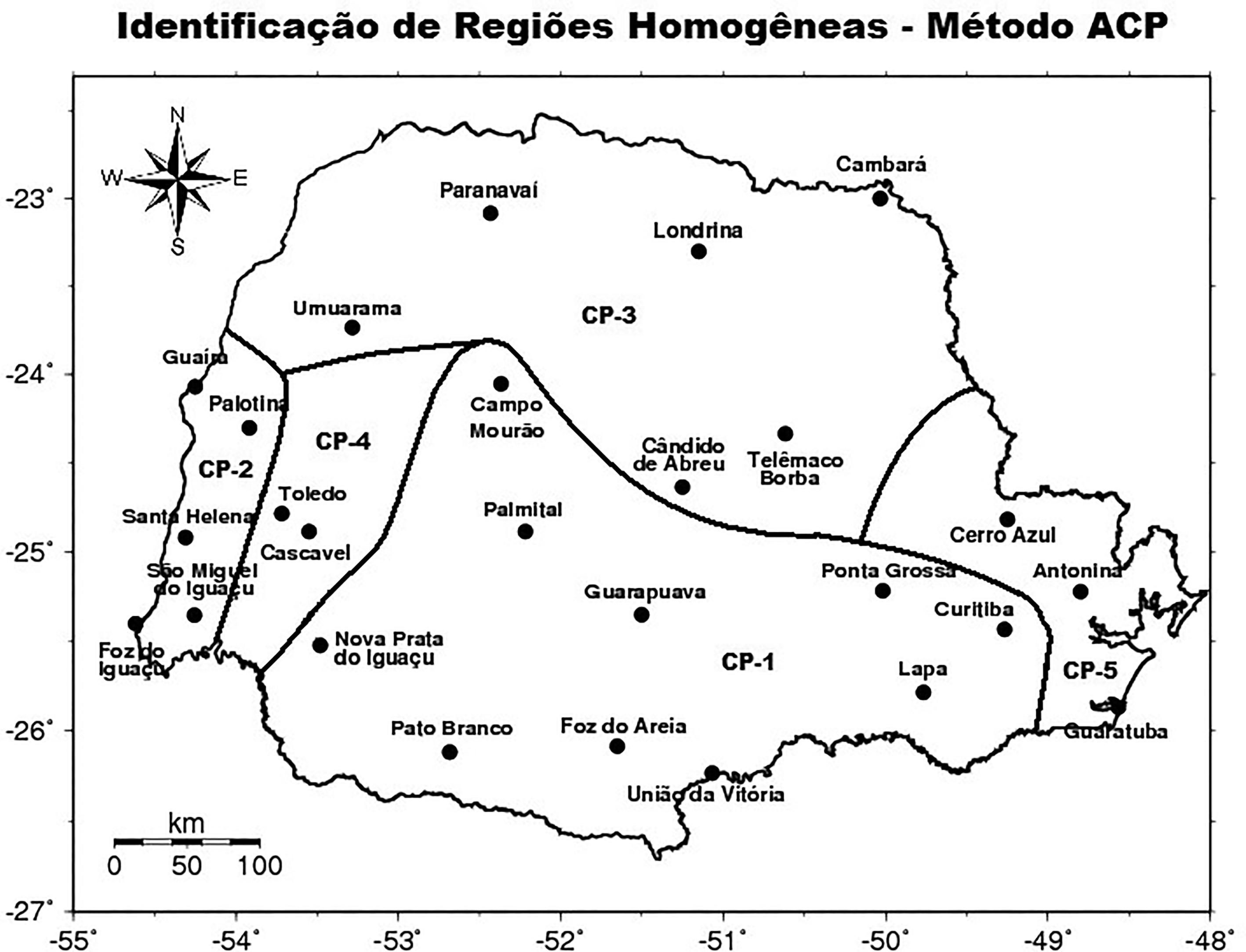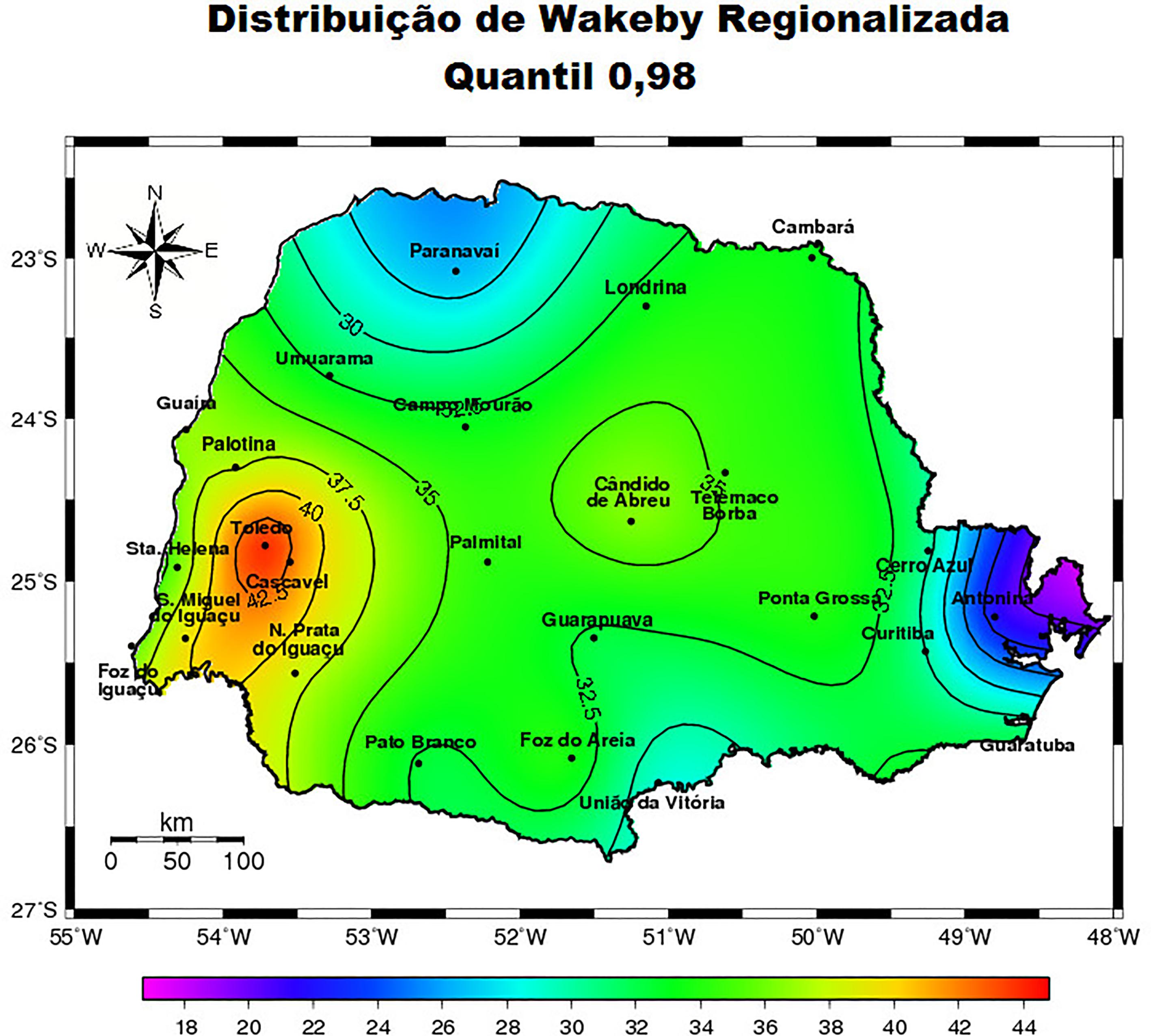Abstract
Gusts from 26 meteorological stations at Paraná (Brazil) were analyzed to estimate their magnitude and frequency. This analysis integrated the homogeneous regions identification, using the principal components analysis, and regional frequency analysis, since the available dataset were too short to apply conventional methods. Similar data patterns were identified in five regions: Coast, Central, Mid-West, West and North. This results were geographical consistent, because the stations are at contiguous sites and located at regions with similar characteristics of relief and coast distance. The Wakeby distribution was selected as the most adequate for the regional frequency analysis. The regional quantiles estimated by the adjusted distribution were coherent with the spatial differences verified in the descriptive statistic. For a given return period of 50 years, the region composed by Cascavel and Toledo stations showed the most severe winds, with 41,9 and 44,8 ms-1, respectively. In the West winds vary from 35,3 to 39,7 ms-1, in the Central from 28,8 to 38,2 ms-1, in the North from 26,4 to 36,6 ms-1 and in the Coast from 21,4 to 30,6 ms-1. The results of this study are innovator since the wind probabilities were estimated using a short dataset, however with good quality and temporal resolution.
Keywords:
frequency analysis; severe wind; gust

